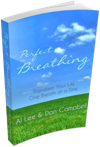
With the relentless and vicious COVID-19 still breathing down our necks, much has been made not only about our respiration, but also about blood-oxygen saturation, or O2-sat. These levels are measured by frontline healthcare workers in critical care settings and emergency rooms who employ a device called a pulse oximeter. Their use has piqued the interest of many people curious about their own O2-sat levels.
With the rise and growing popularity of consumer digital devices, available now are over-the-counter pulse oximeters, which quickly, easily and painlessly monitor the oxygen saturation in your blood. These non-invasive devices clip most commonly onto a finger (though an ear lobe or toe can also be used) and can rapidly assess even small changes in how efficiently oxygen is being carried to your extremities furthest from the heart, including the legs and arms.
How pulse oximeters work
According to Healthline.com, “Small beams of [red and infrared] light pass through the blood in the finger, measuring the amount of oxygen. It does this by measuring changes of light absorption in oxygenated or deoxygenated blood. This is a painless process. … The pulse oximeter will thus be able to tell you your oxygen saturation levels along with your heart rate.”
But do you really need a pulse oximeter?
Though the devices professional healthcare workers use are more accurate (and expensive), a home device can provide some peace of mind as we navigate the pandemic, affording the user one more tool for assessing health.
There are many excellent and affordable choices that both measure oxygen saturation levels in the blood and heart rate. I easily purchased a Zacurate Pro Series 500DL Fingertip Pulse Oximeter Blood Oxygen Saturation Monitor from Amazon. It has enabled me to find a baseline level of not only O2 saturation, but also my resting heart rate. I have used it to measure active heart rate and how quickly I can bring it down using diaphragmatic breathing (the 6-Second Breath) and for meditation. As one more health monitor in your toolbox, it can also help simply reduce fear and anxiety in these pandemic times.
For more on the 6-Second Breath, check out our book, “Perfect Breathing.”



